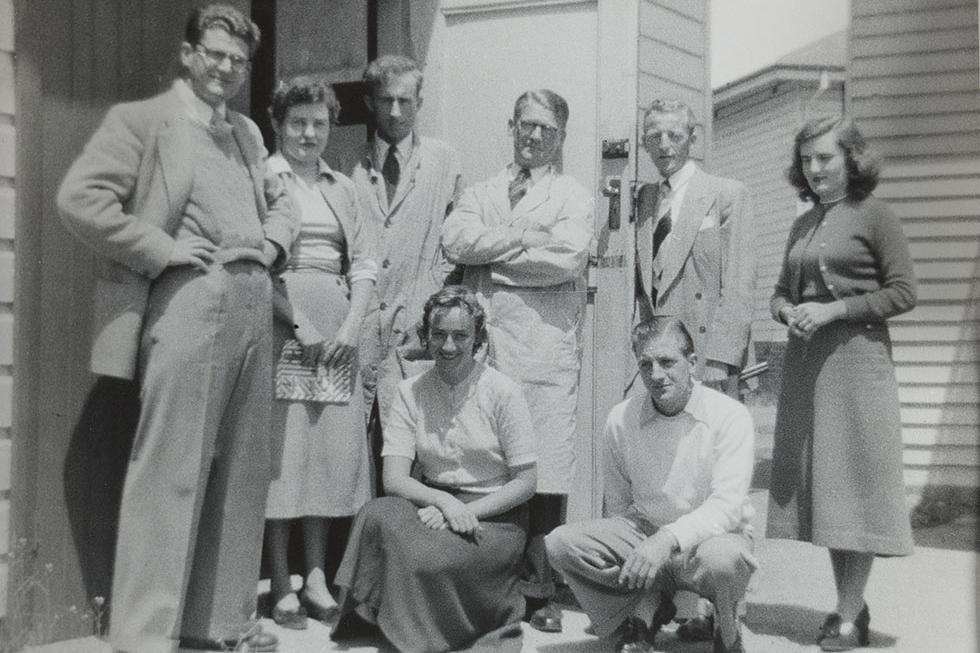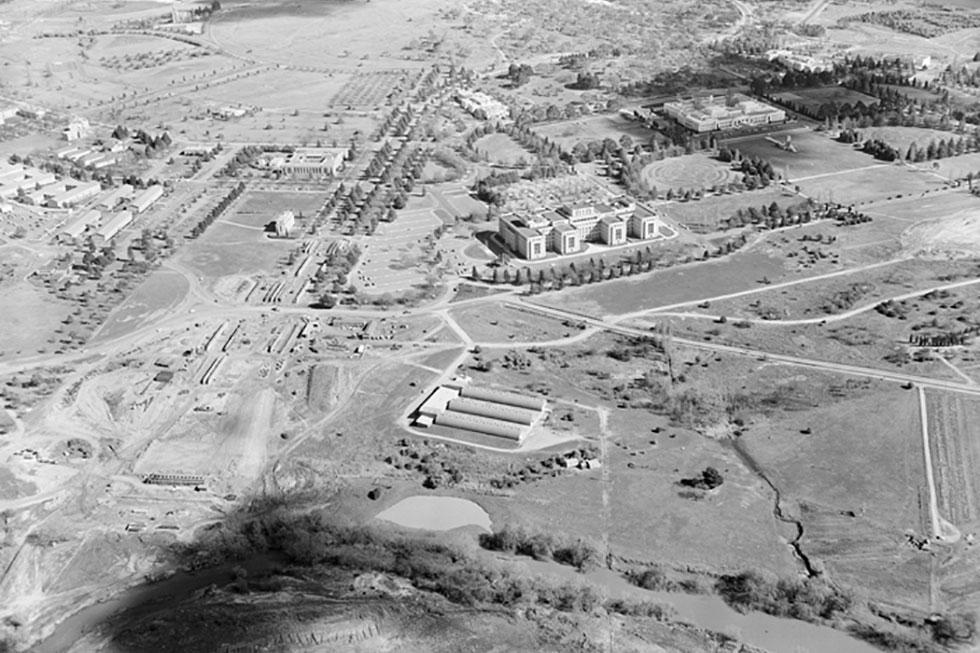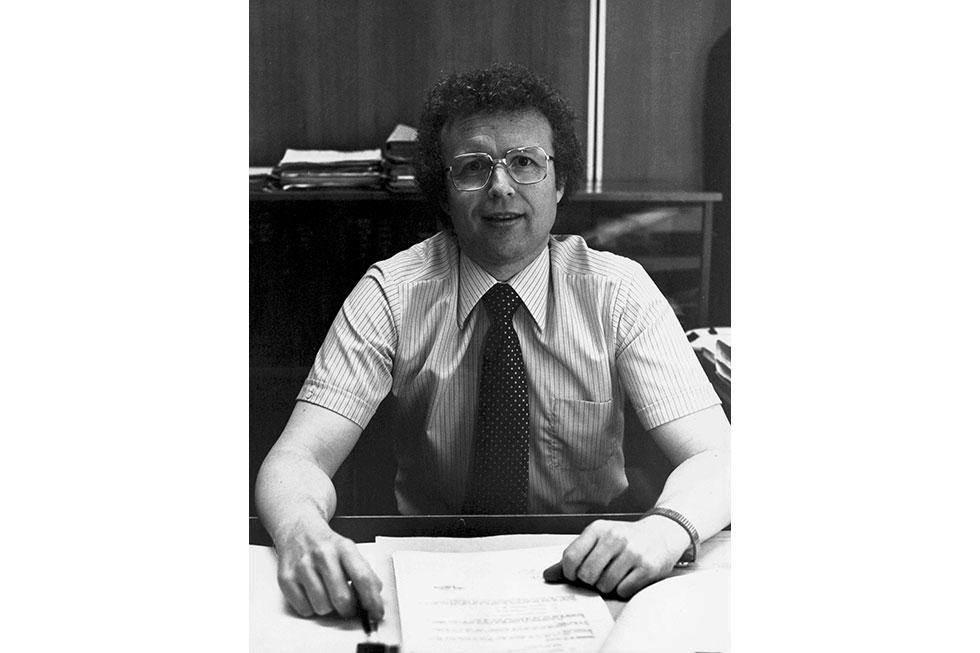The National Archives of Australia, as it is known today, did not always exist in its current form. From 1913 to now, the ways Australia has preserved its Commonwealth records have continued to evolve. A need to protect Second World War records paved the way for archiving all Commonwealth records. First created as a part of the National Library of Australia, the National Archives developed into an independent agency in 1961 and its functions were passed into law in 1983. As the National Archives has grown, so has its expertise, its premises, and the many ways the collection can be accessed. Today it is the memory of the nation, safeguarding Australian history into the future.
First steps
In 1913 Walter Burley Griffin, Federal Capital Director of Design and Construction, proposed that a ‘Capitol’ building in the new city of Canberra could be used to house archives, and to ‘commemorate Australian achievements’. A foundation stone was laid in the 1920s, though the building was never built.
The first real progress to create an Australian national archives began in 1942. An expert committee was appointed to advise on preserving Second World War records. The vision quickly grew to include all Commonwealth records.
Consolidation
From 1942 to 1952 the National Library and the Australian War Memorial shared responsibility for Commonwealth records. The Memorial had responsibility for combat-related records, and the Library had everything else.
The Library appointed Ian Maclean as Archives Officer in October 1944. The Archives of today traces its descent, through an unbroken line of evolving organisations, from that date.
The Memorial had appointed Axel Lodewyckx as Archives Officer in July 1944. Although employed by different organisations, he and Maclean worked in parallel for some years. By 1949 the Library had created an Archives Division, giving Maclean a team of his own to lead.
The path to independence
In 1952, the Memorial gave up its role as an archives authority, though to this day it remains custodian of combat-related Commonwealth records.
That left the Archives Division as the sole authority for Commonwealth records, and it had much work to do. The first transfers of records to the infant organisation were voluminous. Some government agencies held records dating from before Federation.
In 1957 the Paton Committee of Inquiry into the National Library recommended the Archives Division be separated from the Commonwealth National Library. This recommendation was endorsed by Cabinet on 1 March 1960. It was put into effect on 23 March 1961 when the Archives Division was transferred to the Prime Minister’s Department.
This was a major turning point. The Archives Division gained its independence and became known as the Commonwealth Archives Office.

Archives Division staff, 1954. From left to right: Ian Maclean, Pat Kelly, Stewart Broadhead, Charles Gilbert, Harold Field, Jean Hamon. In front: Marjorie Vickers and John Baker. NAA: A755, RS2/7 Part 2/3

Aerial view of Commonwealth Archives Office (Nissen huts), 1960. NAA: A1200, L36013

Archivist at work in Brighton, c. 1961 – 1969. NAA: B1000, ARCHIVES/MELBOURNE/160

Archivist Peter Scott at his desk, mid-1960s. NAA: C3612, Peter Scott

Mitchell repository, 1984. NAA: A6135, K9/3/84/2

National Archives Chester Hill, 1978. NAA: B6295, 5613B
A national presence
Meanwhile the Public Service Board had surveyed records held by Commonwealth agencies across Australia. It recommended that repositories be set up in each state and territory. These offices were opened between 1949 and 1974.
In the early years, the collection had often been stored in makeshift premises. The first purpose-built repository opened in Sydney, at Chester Hill, in 1975. In Canberra, space was leased in various locations until 1981, when a repository opened in Mitchell. In 1974 the organisation became known as the Australian Archives.
Since the 1980s the Archives has lobbied for an expanded and purpose-built home of its own in Canberra. A site close to the National Library was chosen in 1982. Following a design competition in 1979, and again in 1982, Sydney architect Ken Woolley was selected. Due to other government priorities this vision never left the drawing board.
In 1998 the name changed again to the National Archives of Australia. Although still working from leased premises in the Parliamentary Triangle, the National Archives continues to push for a home of its own in Canberra, with all the facilities needed to make the collection accessible to the Australian people.
Access for everyone
A Cabinet decision in 1966 established that the public could gain access to records older than 50 years. This ‘closed period’ was reduced to 30 years in 1970. Today it is 20 years.
The annual release of Cabinet records each 1 January dates from 1986. It is now a much anticipated event by the community and media alike.
The task of arranging and describing records so that people can understand what to look for is constant. In the mid-1960s the National Archives devised the Commonwealth Records Series (CRS) system. It is a uniquely Australian and innovative system of intellectual control of records. The CRS system was set up in response to rapid administrative change within the Australian government since the Second World War. The theoretical breakthrough came from archivist Peter Scott, appointed in 1963.
In 2001, the National Archives introduced a digitisation-on-demand service, initially for records held in Canberra. The service provides access to digitised images of collection items through the National Archives' website. In 2021, more than 62 million pages of collection material is freely available online with more added daily.
Reaching out
During the 1970s the Archives took steps to be more visible to the public. In 1983 it finally received legislative mandate with the passing of the Archives Act 1983. In 1994 the Archives launched its first website, followed by a searchable database in 1995.
A ground-breaking exhibition, Between Two Worlds, was developed in 1993 in consultation with Aboriginal communities. It was about the forced removal of Aboriginal children from their families in the Northern Territory. It toured nationally. Since then, the National Archives has entered into many agreements and joint projects with Aboriginal and Torres Strait Islander peoples around Australia to simplify access to the collection.
Future challenges
The National Archives of Australia runs an active program of touring exhibitions, learning and outreach programs. We continue to help Australian government agencies improve how they create, collect, manage and use information. This in turn allows the Australian government to better support, protect and serve the community.

National Archives Preservation Facility. Photograph by John Gollings, 2017.

Mobile shelving inside the National Archives Preservation Facility. Photograph by John Gollings, 2017.

Conservator at work at the National Archives Preservation Facility. Photograph by John Gollings, 2017.

‘Connections’ exhibition interactive digital wall at the National Office in Parkes. Photograph by Sammy Hawker, 2020.

